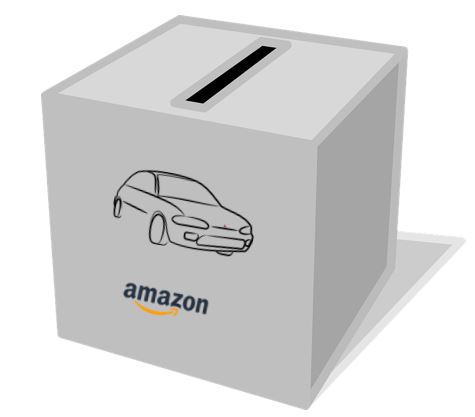Home » Uber wants to be Amazon. Should a nonprofit want the same thing?
Uber wants to be Amazon. Should a nonprofit want the same thing?

Uber’s past bad corporate behavior should not inspire imitation by any nonprofit. Yet something an Uber spokesperson said last week, prior to Uber’s initial public offering (IPO), made me pause.
The Uber representative said Uber wants to become the next Amazon for the transportation world. It’s an aspirational message, one that dares the investor to dream of a future where Uber becomes the master of the transportation universe, just as Amazon has become the leader in online retailing and Cloud computing power.
The company further underscored the reasons for this Amazon-like dream. Yes, said Uber spokespeople, the company has consistently lost money ($1.8 billion last year and $1 billion in this year’s first quarter) but so did Amazon for many years. Look where Amazon is today, a money-making, world-beating company. Amazon is an enterprise every tech company admires.
Wall Street analysts recognize this as a pre-IPO pitch. Some are embracing it, while others are rejecting the hype.
Uber’s aspirational message
Uber has done something very right here, something your nonprofit can and should apply: It’s taken what could be a very complicated pitch to investors and made it extremely simple.
Think about it. Uber could have added to a noisy business world by talking about tech features and operating details. It could have spit out all sorts of pre-IPO investor themes, such as “cloud platform,” “payment systems,” “driver recruitment,” “restaurant delivery,” “freight logistics,” “autonomous vehicles,” and on and on.
All these phrases are either boring or become background noise in a very busy stock market climate.
Instead of boring investors with a barrage of tech terms, Uber fed Wall Street six magic words: We want to be like Amazon.
Everyone got it, immediately!
Anyone who wants to dig further into Uber’s “Amazon dream” can read news articles, SEC filings and follow the financial press for all things Uber.
What made this message so powerful was its ability to inspire, break through the noise, and by inspiring it attracted ears, eyeballs, and wallets.
Uber’s lesson for nonprofits – Dr. Seuss
What should a nonprofit aspire to become? Is it to become simply big and a singularly powerful “platform”?
Okay. Stop.
First, catch your breath. Open the window and look outside at the real world, then seriously ask yourself about the dynamics of the social innovation world. What do you and your nonprofit truly value? You value impact, not money. You want to help people and improve society. None of this is Uber’s aim. Its purpose is to use its platform to make a profit and satisfy investors.
Second, note that Uber’s six-word We-want-to-be-like-Amazon phrase is meant to attract investors, not to become a template for a nonprofit’s mission statement.
Uber’s singular great lesson for nonprofits is to tell the world what you want to be when you grow up.
Tell your donors, your funders, your stakeholders what you want to achieve for your beneficiaries, for those that need your help.
Use Uber’s playbook: Keep the message powerful, hopeful, and simple. There’s no need to complicate the message by discussing the algorithms it must create to deliver a wonderful customer experience each day (Uber completes approximately 15 million trips per day).
Most important in your central message is to make people dream of a world that can be.
As Theodor Geisel, aka Dr. Seuss, wrote[1]
Oh, the places you’ll go! There is fun to be done!
There are points to be scored. There are games to be won.
And the magical things you can do with that ball will make you the winning-est winner of all….
Uber has – at least for the moment – given people the ability to dream. Can you do the same for your nonprofit?
[1] Oh, the Places You’ll Go!,” Dr. Seuss, Random House, NY,1990


